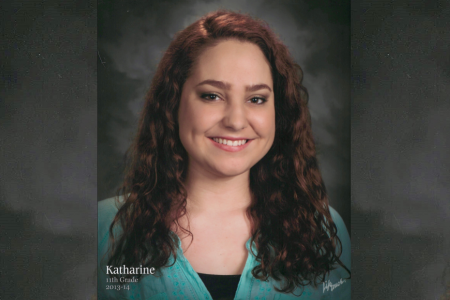By Katharine Smith, Summer Intern, The Kennedy Forum
After a year and a half of virtual learning, limited extracurricular activities, and social isolation, more than half of all American teens reported struggling with mental health due to the COVID-19 pandemic. As an intern at The Kennedy Forum this summer, I learned a great deal about the impact of trauma. I also learned a lot about the role our education system can and should play in advancing critical mental health literacy and connecting students to care. My role allowed me to reflect on my own experience as a student, and I’d like to share it with our readers.
In elementary school, I was taught basic social-emotional skill-building. We learned about our feelings and had assemblies focused on bullying and being kind to one another. Our school counselor was available to talk to students who had problems at home or who were experiencing trouble with friends. While true mental health education was certainly lacking in the classroom, I do remember the counselor being a trusted resource.
My middle school and high school mental health education included conversations about friendships, puberty, and bullying. In my health and psychology classes, we talked about mental health in a very clinical way, learning textbook definitions of things like anxiety, eating disorders, and reviewing the history of psychology. Unfortunately, I never felt that this was directly related to my own personal mental health in a meaningful way. We didn’t really have conversations about addressing feelings of depression or anxiety and when/how to get help (and what that might look like)—the practical information that students really need.
In my sophomore year, our school district was rocked by two student deaths. Two girls, a 9th grader and an 8th grader died by suicide within a month of one another. We, as students, weren’t sure how to respond to these losses. Our counselors, the ones we spoke to about college prep or failing grades, offered to help students through their grief while the district hosted a forum for parents on teen suicide. Sadly, I don’t recall these tragic losses shifting any mental health education efforts within the curriculum itself. We didn’t have assemblies, go through any educational courses, or discuss suicide in our classrooms. The district was stunned again when another student, this time a 6th grader, died by suicide only two years later.
During my senior year, my 16-year-old brother reached a crisis point with his own mental health. In an essay for his English class, he wrote about how he was struggling and even expressed suicidal thoughts. Thankfully, his teacher turned the essay into the counselor who then alerted my parents. That night, we checked him into an in-patient pediatric mental health facility. Our family learned to navigate the crisis together in our own home and received strong support from those closest to us. I did not, however, receive any official support from within my school. The teachers who knew of the situation personally reached out to express support, but my counselor didn’t call me in to check on me or discuss how they were going to help my brother when he returned to school.
Looking back on this period, my brother and I have both wondered how a stronger mental health education could have helped us navigate his situation—or the suicide of those three fellow students—as young teens. Thankfully, we had a strong support network of family and friends, but many don’t.
Things were very different in my undergraduate and graduate schooling. The two institutions I attended put an emphasis on the importance of mental health. I was constantly reminded of the many resources available on campus and was encouraged to utilize them. Most of my professors were sympathetic to student stress and prioritized mental health discussions in the classroom. Both institutions offered free counseling, ways to notify the school of struggling classmates, events focused on mental health, and peer educators.
My summer with The Kennedy Forum has taught me that addressing mental health “before stage four” is critical to change. Half of mental health issues begin by age 14 and in September 2020, over half of 11-17 year-olds reported having thoughts of suicide or self-harm in the previous two weeks. According to the CDC, from April to October 2020, hospitals across the U.S. saw a 24% increase in the proportion of mental health emergency visits for children ages 5 to 11, and a 31% increase for children ages 12-17. Students cannot wait until they graduate high school to start real mental health education. The consequences are far too dire.
So how can schools better address the mental health needs of their students? Legislators, school boards, mental health organizations, and advocates have developed helpful tactics around:
- Utilizing a social-emotional learning curriculum, teaching skills in areas like self awareness, responsible decision making, and self management
- Providing mental health training to teachers and staff, including mental health literacy, and de-escalation techniques
- Ensuring students and teachers have access to mental health resources inside and outside of the classroom
- Implementing a mental health screening and check-in system for students
As we enter a new school year amid a continuing global pandemic, youth mental health must be on everyone’s radar. Young people need cognitive tools, in-person connections, and tangible resources to help them deal with life’s many stressors—not a thorough review of the history of psychology. Working together, advocates, educators, and policymakers can define a new path forward. One that will empower youth to thrive like never before.

